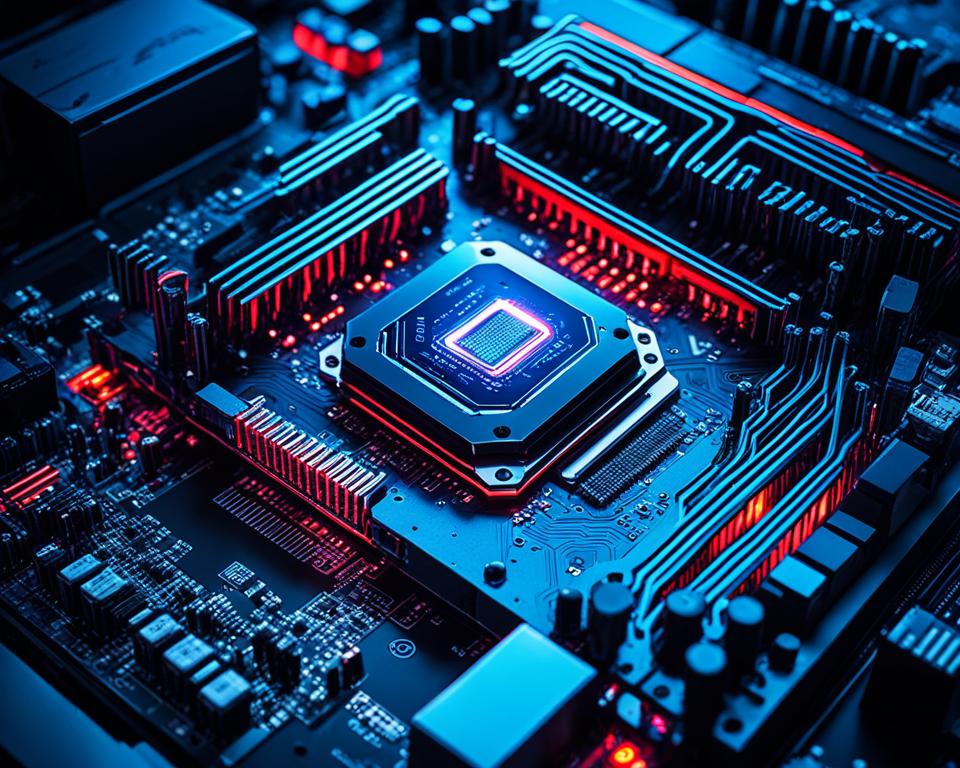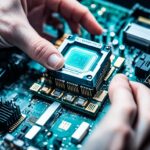Imagine this: It’s the weekend, and you’re ready to dive into some serious gaming on your custom-built PC. Your heart is pounding with excitement as you boot up the latest, graphically intense game and prepare to take on the virtual world. But as the game loads, you start to notice something… off. Your once smooth and high-fidelity experience is now plagued by lag and stuttering. Your dreams of conquering the virtual realm quickly fade away, replaced by frustration and disappointment.
What went wrong? Well, one possible culprit could be your motherboard’s overclocking capabilities. When it comes to pushing your PC’s performance limits, having a motherboard that can handle the heat (literally) is crucial. But how do you tell if a motherboard is good for overclocking? That’s where performance metrics come into play.
Performance metrics, such as VRMs (Voltage Regulator Modules), are essential indicators of a motherboard’s overclocking potential. VRMs are responsible for regulating the voltage that powers your CPU, making them a critical component for achieving high CPU overclocks and stable clock speeds. A high-quality VRM with more power phases is a good sign that a motherboard can handle the rigors of overclocking.
But what are power phases, you ask? Power phases represent the components within the VRM that are responsible for delivering power to the CPU and other components. Think of them as the gears in an overclocking machine. The more power phases a motherboard has, the smoother and more stable the power delivery will be, resulting in higher overclocks and better overall performance.
When assessing a motherboard’s VRMs, it’s not just the number of power phases that matters; it’s also the quality of the components. MOSFETs (Metal-Oxide-Semiconductor Field-Effect Transistors) are one of the key components of VRMs and can greatly impact the stability and performance of your overclocking endeavors.
So, the next time you find yourself in the market for a new motherboard that can handle the demands of overclocking, pay close attention to the performance metrics. Look for a motherboard with a high-quality VRM, ample power phases, and positive reviews from experienced overclockers. By choosing a motherboard that meets these criteria, you can ensure that your PC will be ready to perform at its best, no matter the overclocking challenge.
Key Takeaways:
- A motherboard’s performance metrics, such as VRMs, are crucial for achieving high CPU overclocks and stable clock speeds.
- VRMs regulate the voltage that powers the CPU and consist of power phases, which determine the quality and stability of power delivery.
- When assessing a motherboard’s VRMs, consider both the number of power phases and the quality of components, such as MOSFETs.
- Good reviews from experienced overclockers can provide valuable insights into a motherboard’s overclocking capabilities.
- Choosing a motherboard with a high-quality VRM and ample power phases can ensure optimal performance and stability for your overclocking endeavors.
Understanding Motherboard VRMs and their Importance for Overclocking
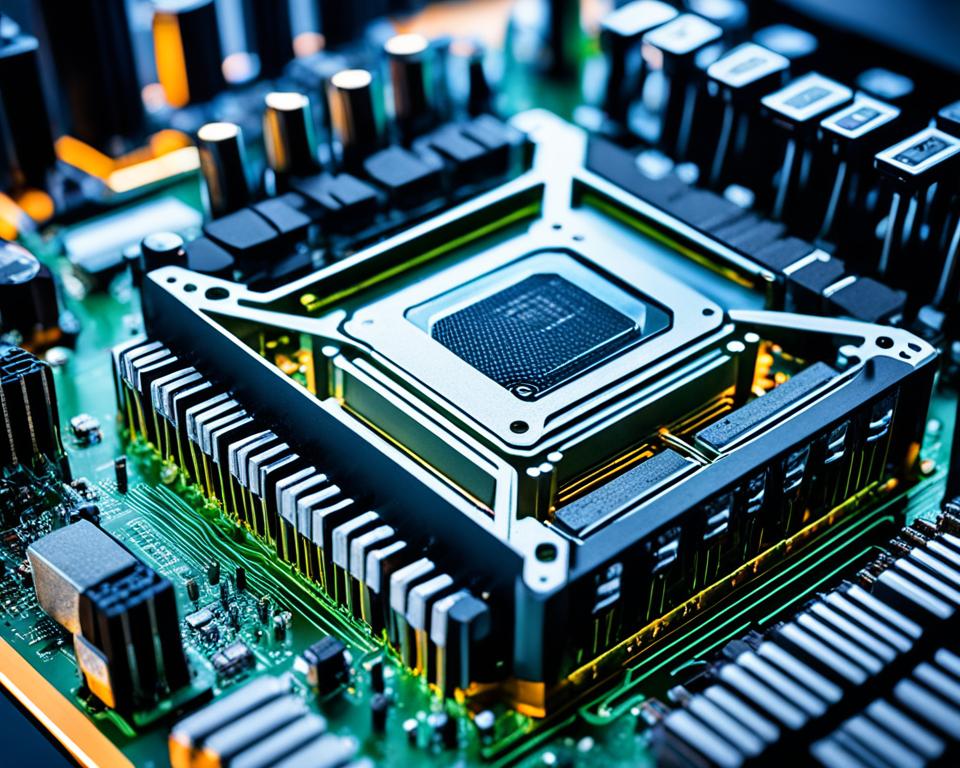
When it comes to achieving high CPU overclocks and stable clock speeds, understanding the importance of motherboard VRMs, or Voltage Regulator Modules, is crucial. VRMs regulate the voltage that passes from the power supply to the CPU, ensuring clean and consistent voltage delivery. A high-quality VRM with more power phases can provide better power delivery and improved stability for overclocking.
Each VRM consists of phases, which are composed of a capacitor, a choke, and a MOSFET (Metal-Oxide-Semiconductor Field-Effect Transistor). These components work together to regulate the voltage that powers the CPU, allowing it to operate at higher clock speeds.
Stable clocks are essential for overclocking success, as they require a constant and reliable power supply. The quality of the VRM plays a significant role in achieving this stability. Motherboards with low-quality VRMs may struggle to provide consistent power delivery, resulting in unstable overclocks and potential system instability.
Having more power phases in a VRM can enhance power delivery and increase stability, as each phase contributes to smoother voltage regulation. However, it’s important to note that the number of phases alone does not guarantee better overclocking capabilities. The quality of the components used in the VRM, such as capacitors, chokes, and MOSFETs, is equally important.
“A high-quality VRM with more power phases is a good sign of a motherboard’s overclocking potential.”
Before purchasing a motherboard for overclocking, it’s essential to consider the VRM’s specifications, including the number of power phases and the quality of the components used. Reviews and recommendations from experienced overclockers can provide valuable insights into the performance of specific motherboards and their VRMs.
Figure 1: Motherboard VRM Structure
| Component | Description |
|---|---|
| Phases | Number of power phases, each consisting of a capacitor, a choke, and a MOSFET |
| Capacitor | Stores and discharges energy to provide stable voltage |
| Choke | Filters electric current and regulates voltage |
| MOSFET | Controls the flow of electricity to the CPU |
Assessing Motherboard VRMs: Power Phase Design and Hardware Quality
When it comes to evaluating a motherboard’s capabilities for overclocking, two key factors come into play: the power phase design and the hardware quality of the VRM (Voltage Regulator Module). The VRM is responsible for regulating the voltage that powers the CPU, making it a critical component for achieving high CPU overclocks and stable clock speeds.
The power phase design of a motherboard’s VRM is typically represented by the notation X+Y, where X denotes the number of phases dedicated to CPU/RAM power, and Y represents the number of phases for other components. Generally, a higher number of power phases indicates better power delivery and the ability to maintain stable high clocks.
While the number of power phases is an important consideration, the quality of the hardware used in the VRM also plays a significant role in determining overclocking performance. It’s crucial to research and read motherboard reviews from reputable sources to get insights into the VRM’s durability, efficiency, and overall performance. Look for verified purchases or trustworthy benchmarks to ensure a reliable assessment.
Overclocking enthusiasts often emphasize the importance of a robust VRM with high-quality components and effective heat dissipation. A well-designed VRM can provide clean, stable power delivery to the CPU, which ultimately translates into better overclocking performance and increased system stability.
Additionally, pay attention to VRM cooling solutions, such as heatsinks or heatpipes, as they contribute to maintaining optimal temperatures during overclocking. These cooling features help dissipate heat generated by the VRM, preventing thermal throttling and ensuring consistent performance.
Example Power Phase Design and Hardware Quality Comparison:
| Motherboard Model | Power Phase Design (CPU/RAM) | Power Phase Design (Other Components) | Hardware Quality |
|---|---|---|---|
| Brand X Model A | 8 | 4 | High-quality VRM components |
| Brand Y Model B | 4 | 2 | Mid-range VRM components |
| Brand Z Model C | 12 | 6 | High-quality VRM components |
Table: Comparison of Power Phase Design and Hardware Quality in Select Motherboards
The Impact of VRMs on CPU Performance, Even Without Overclocking
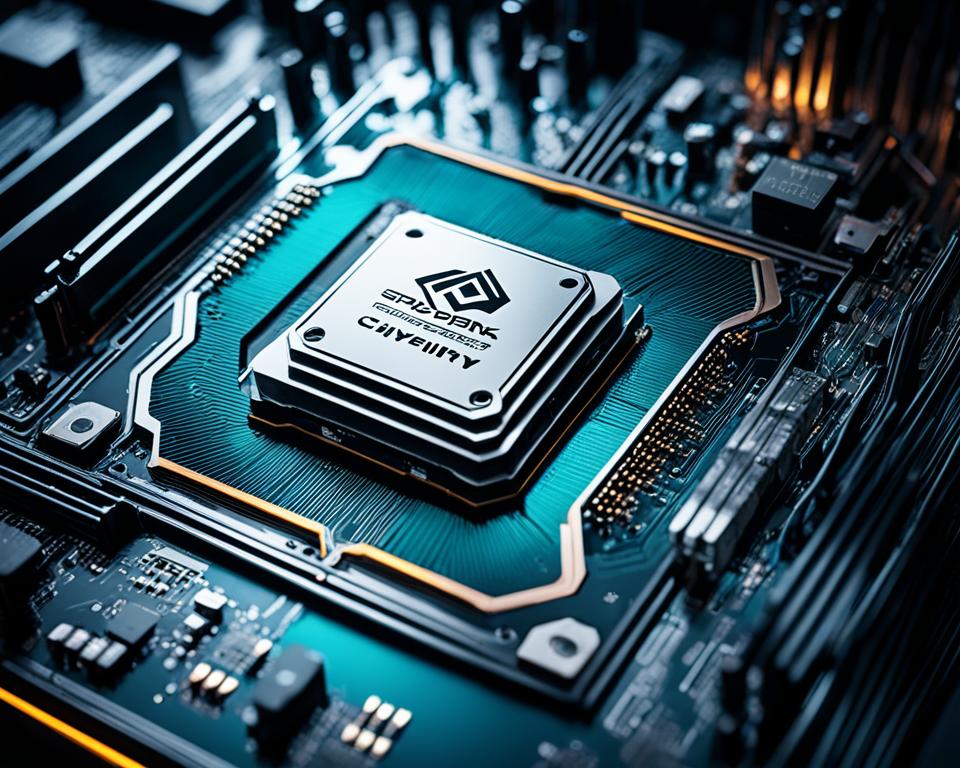
Motherboard VRMs play a crucial role in not only overclocking performance but also in the overall CPU performance, even without overclocking. The VRMs, or Voltage Regulator Modules, regulate the voltage that powers the CPU, ensuring clean and stable power delivery.
A high-quality VRM with good cooling can enable a non-overclocked CPU to run at its rated boost frequencies more frequently and stably, resulting in improved overall performance. The VRM’s ability to provide a consistent and reliable power supply enhances the CPU’s capability to operate at its optimal levels.
“A high-quality VRM not only allows for better overclocking potential but also ensures that the CPU can consistently reach its rated boost frequencies without overclocking. This leads to improved overall performance and responsiveness of the system.” – TechEnthusiast Review
Even if you do not plan to overclock your CPU, investing in a motherboard with a high-quality VRM is still beneficial. It ensures that your non-overclocked CPU can consistently achieve its maximum performance potential, providing a smoother and more responsive computing experience.
| Benefits of High-Quality VRMs for CPU Performance |
|---|
| Consistent and stable CPU performance |
| Increased frequency and responsiveness |
| Improved overall system performance |
| Enhanced gaming experience |
Investing in a motherboard with high-quality VRMs is a wise choice, as it not only allows for better overclocking potential but also ensures optimized CPU performance even without overclocking. The stability and clean power delivery provided by a high-quality VRM contribute to consistent and efficient CPU operation, benefiting all PC hardware components.
Considering Motherboard Compatibility and Features for Overclocking
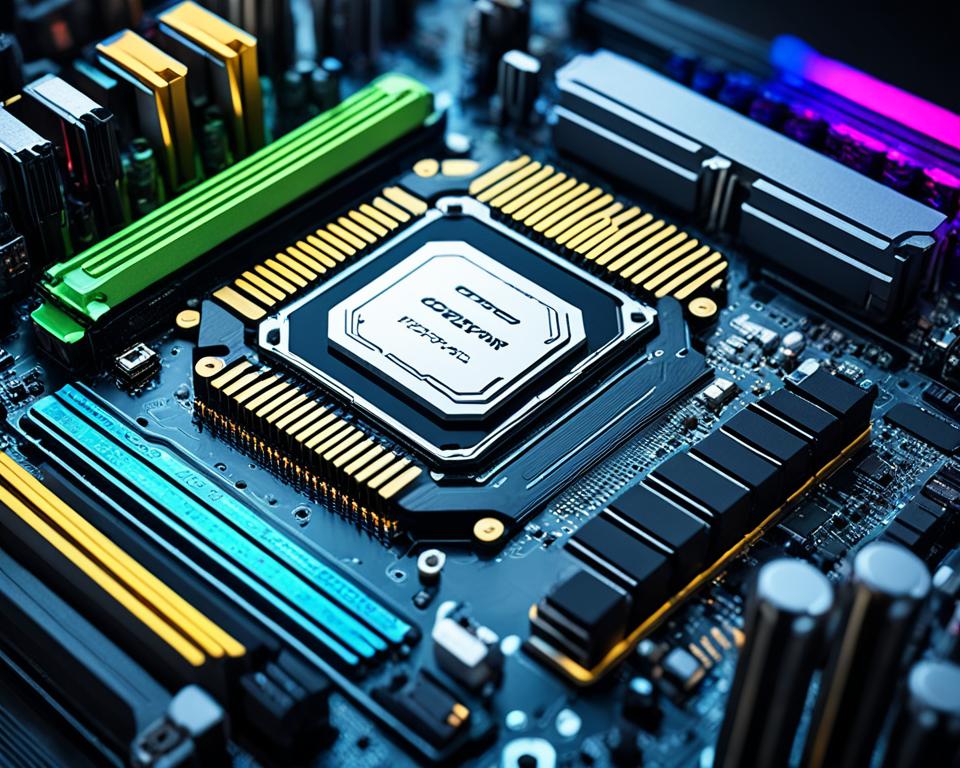
When it comes to overclocking, choosing the right motherboard is crucial for maximizing performance. In this section, we will discuss the importance of motherboard compatibility and the features to look for when selecting an overclocking-friendly motherboard.
Motherboard Compatibility
Compatibility is the first consideration when choosing a motherboard for overclocking. It is essential to ensure that the motherboard is compatible with your chosen chipset and CPU. Different processor brands, such as Intel and AMD, offer models with varying levels of overclocking support.
Before making a purchase, check the motherboard manufacturer’s website or product specifications to verify compatibility with your specific CPU. Ensure that the motherboard supports the necessary socket type and chipset for your processor. Ignoring compatibility can lead to compatibility issues and hinder your overclocking efforts.
Motherboard Features for Overclocking
In addition to compatibility, certain features can significantly enhance the overclocking potential of a motherboard. When evaluating different models, consider the following features:
- Multiple M.2 and PCIe Slots: Having multiple M.2 and PCIe slots allows for expansion and the use of high-speed storage and graphics cards. This feature provides more flexibility for overclockers and future upgrades.
- Good Power Delivery: Look for motherboards with robust power delivery designs and quality components. A motherboard with high-quality VRMs (Voltage Regulator Modules) and sufficient power phases can provide stable power delivery to the CPU, supporting higher clock speeds during overclocking.
- Effective Heat Dissipation: Overclocking generates additional heat, so an overclocking-friendly motherboard should have effective heat dissipation mechanisms. Look for features such as well-placed heatsinks, heat pipes, and fan headers for connecting additional cooling solutions.
- Support for Overclocking Software and Tools: Some motherboards come with proprietary software or user-friendly BIOS interfaces specifically designed for overclocking. These tools make it easier to adjust settings, monitor system status, and fine-tune overclocking parameters.
It is important to research and read reviews on different motherboard models to identify those that have the desired features for overclocking. Manufacturers’ websites and reputable tech review websites can provide valuable insights and user experiences.
Please note that while these features are important for overclocking, it is necessary to strike a balance based on individual requirements and budget.
Comparison Table: Overclocking-Friendly Motherboards
| Brand | Model | Socket | Chipset | Power Phases | M.2 and PCIe Slots | Heat Dissipation |
|---|---|---|---|---|---|---|
| Brand A | Model X | Socket X | Chipset X | 10+2 | 3 x M.2, 4 x PCIe | Heatsinks, Heat Pipes |
| Brand B | Model Y | Socket Y | Chipset Y | 12+2 | 2 x M.2, 5 x PCIe | Heatsinks, Fan Headers |
| Brand C | Model Z | Socket Z | Chipset Z | 8+4 | 1 x M.2, 3 x PCIe | Heatsinks, Heat Pipes |
This table represents a simplified comparison of overclocking-friendly motherboards from different brands. It showcases key features such as power phases, M.2 and PCIe slots, and heat dissipation capabilities.
Remember, the best overclocking motherboard for you will depend on your specific requirements, budget, and preferred processor brand. Take the time to research and compare different models to find the perfect fit for your overclocking needs.
The Importance of Cooling in Overclocking
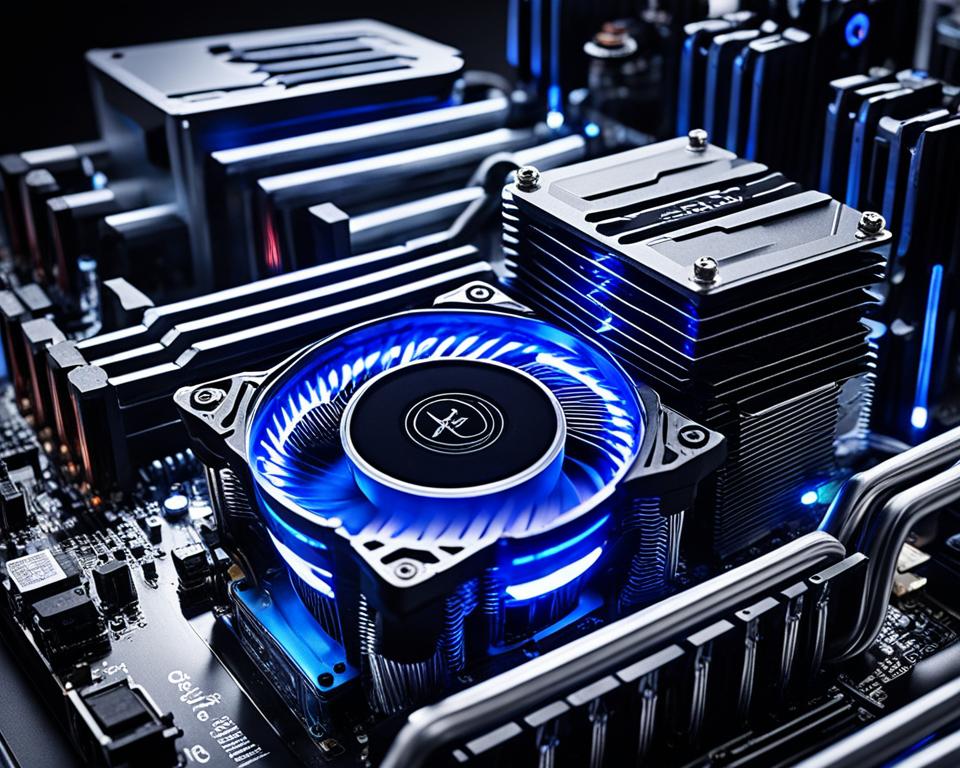
In the world of overclocking, maintaining optimal temperatures is essential for ensuring the stability and safety of your CPU. When pushing your CPU beyond its factory-set limits, the generated heat increases significantly, making proper cooling a critical consideration.
The stock cooler that comes with your CPU is generally not sufficient for overclocking. Its cooling capacity is designed for the CPU’s base clock speed and cannot handle the additional heat generated during overclocking. To achieve higher clock speeds without risking thermal throttling or system instability, investing in a high-quality CPU cooler is highly recommended.
A high-end aftermarket air cooler or liquid cooler can provide superior heat dissipation, ensuring that your CPU stays within safe temperature limits. Air coolers utilize large heatsinks and fans to draw heat away from the CPU, while liquid coolers use a closed-loop system to circulate coolant and dissipate heat efficiently.
Proper case cooling is also crucial in maintaining optimal temperatures for overclocking. An efficient airflow system with strategically placed intake and exhaust fans helps dissipate heat generated by the CPU cooler and other components. This prevents hot air from accumulating inside the case, resulting in better overall cooling performance.
Benefits of Effective Cooling in Overclocking:
- Improved stability: A cooler CPU ensures that the system remains stable even under heavy loads, reducing the risk of crashes, freezes, or other stability issues.
- Extended component lifespan: Excessive heat can degrade the performance and lifespan of your CPU and other components. Effective cooling helps prevent overheating and prolongs the longevity of your hardware.
- Higher overclocking potential: With adequate cooling in place, you can push your CPU further and achieve higher overclocks. The improved heat dissipation allows for increased voltage and clock speed without compromising system stability.
Remember, when it comes to cooling in overclocking, investing in quality components is essential. Don’t cut corners on CPU coolers or case fans, as they play a crucial role in maintaining optimal temperatures and ensuring a successful and safe overclocking experience.
Power Supply Considerations for Overclocking
When it comes to overclocking your system, one of the most critical aspects to consider is your power supply. Overclocking can increase the power consumption of your system, and a high-quality power supply is essential for handling the increased demand, ensuring stability and reliability.
When choosing a power supply for overclocking, there are a few key factors to keep in mind. One of the most important considerations is wattage. It’s crucial to select a power supply with a higher wattage than your estimated system demand to provide sufficient power to all components, particularly when overclocking. This helps prevent issues such as system instability or unexpected shutdowns due to insufficient power supply.
Additionally, it’s essential to look for a power supply with good voltage regulation and ripple suppression. Clean and stable power delivery is critical for protecting your hardware and maximizing overclocking potential. A power supply with poor voltage regulation or excessive ripple can cause instability and potential damage to sensitive components.
Furthermore, proper cooling and airflow around the power supply are important for optimal performance. Overclocking generates more heat, and a power supply that runs cooler contributes to the overall thermal management of your system. Adequate airflow in your PC case helps dissipate heat effectively, preventing overheating issues that can negatively impact overclocking performance.
By investing in a high-quality power supply with ample wattage, good voltage regulation, and adequate cooling, you can ensure the stability and reliability of your overclocked system. It’s a key component that shouldn’t be overlooked when pursuing maximum performance.
| Component | Power Consumption (Watts) |
|---|---|
| CPU | 100-300 |
| Graphics Card | 150-350 |
| RAM | 5-15 per module |
| Storage Devices | 5-15 per drive |
| Cooling System | 10-50 |
| Other Peripherals | Variable |
| Total Recommended Wattage | Depends on component selection and overclocking level |
The Role of BIOS/UEFI Updates in Overclocking
When it comes to achieving overclocking stability, keeping your motherboard’s BIOS/UEFI firmware up to date is crucial. BIOS updates play a significant role in improving compatibility, fixing bugs, and introducing new features that can enhance overclocking performance.
To stay up to date with the latest BIOS updates, it is advised to regularly check your motherboard manufacturer’s website. They often provide firmware updates that address known issues and optimize the motherboard’s capabilities for overclocking. Following the manufacturer’s instructions, carefully update the BIOS/UEFI before you attempt any overclocking or make adjustments to the system settings.
Updating the BIOS/UEFI not only ensures better compatibility with the latest hardware and software but also helps in unlocking the full potential of your motherboard and CPU. Furthermore, these updates can enhance overclocking stability by providing more precise control over voltage regulation, power delivery, and other critical settings.
Benefits of BIOS/UEFI Updates in Overclocking:
- Improving compatibility with new CPUs and memory modules
- Fixing known bugs and issues related to overclocking
- Introducing new settings and features that enhance overclocking performance
- Enhancing voltage regulation and power management for stable overclocks
By keeping your BIOS/UEFI up to date, you ensure that your motherboard is equipped with the latest optimizations, bug fixes, and performance enhancements that can contribute to better overall overclocking stability.
“Updating the BIOS/UEFI firmware is like unlocking hidden potential in your motherboard. It allows you to harness the full power of your CPU and fine-tune various settings for optimal overclocking performance.”
– Overclocking Enthusiast
It is important to note that updating the BIOS/UEFI carries some risks, as incorrect updates or power interruptions during the process can lead to motherboard bricking. Therefore, it is crucial to follow the manufacturer’s instructions carefully and take precautions such as using a reliable power source and avoiding system interruptions during the update.
Now that you understand the importance of BIOS/UEFI updates in overclocking, let’s move on to the next section where we explore thermal and stability testing for overclocked systems.
Thermal and Stability Testing for Overclocked Systems
Once you have overclocked your system, it is vital to perform comprehensive thermal and stability testing to ensure optimal performance and prevent potential damage. Thorough testing will help you determine the effectiveness of your overclocking settings and ensure that your system remains stable under heavy loads.
To begin, utilize reliable software utilities such as Prime95 or AIDA64 to stress test your CPU and monitor temperatures. These tools will push your CPU to its limits, allowing you to gauge its capabilities and identify any thermal issues. Continuously monitor the temperature during stress testing to ensure that your CPU cooler can handle the increased heat generated by the overclock.
In addition to stress testing the CPU, it is essential to test your system’s stability using real-world applications and games. This type of testing will simulate real-world usage scenarios and allow you to assess whether your overclocked system performs reliably and handles demanding tasks without crashes or errors. Regularly monitoring the temperatures and system performance after overclocking is recommended for long-term success.

